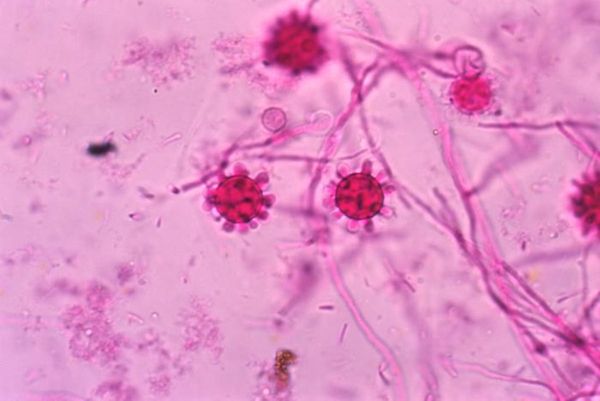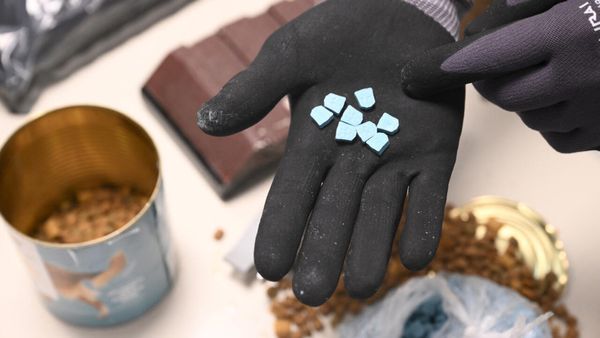Queensland graziers Sam and Sarah Becker have spent a decade painstakingly breeding their idea of perfect beef cattle — but one trait they chase never makes it to the plate.
They are breeding out the controversial practice of dehorning, using genetics to produce animals that do not grow horns.
But as the federal government prepares to spend $5 million reviewing animal welfare, the industry says it will take more than money to end the practice.
And for some producers, the challenge lies in striking a balance between consumers' competing demands for quality meat and swift action.
Polled position
At their central Queensland cattle property, the results of years of testing, selecting, and rejecting bloodlines roam the Beckers' pastures.
Most of their herd of herefords, redfords, and their own unique breed, jarrah reds, are born without horns.
But it will take at least another five years to be completely horn free — what's known in the industry as polled.
"We still want to produce the best possible animal we can," Mr Becker said.
The breeding program was inspired by rising consumer expectations on animal welfare, a global trend according to Meat and Livestock Australia (MLA).
"[We] hope to continually move to a position where dehorning is not a practice that has to be used as much because we have animals that are genetically polled," MLA genetics project manager Clara Bradford said.
She said momentum to transition to polled cattle has been steadily increasing; MLA's most recent figures show in 2010 it was about 60 per cent but in 2020 was almost 73 per cent.
Governments too are paying attention. In its most recent budget, the federal government announced it would spend $5 million renewing the Australian Animal Welfare Strategy over four years that will set national standards and measure improvements "for animal welfare outcomes".
Australia's unique challenge
While dehorning is a common practice in the livestock industry, it is a controversial one condemned by animal activists.
Removing the horns reduces the chance of injury for the animals and the workers who handle them.
For Sarah Becker it makes them easier to manage in the yards.
"With horns, you've got bruising [of cattle] during transport and often the feedlots don't want to see cattle with horns on them either," she said.
The Beckers use pain relief gel Tri-Solfen, which was approved by the Australian Pesticide and Veterinary Medicine Authority in 2018, but they would rather not have to remove horns at all.
"I think we'll be able to get there within the next five years," Sam Becker said.
It was a unique challenge for Australia where Ms Bradford said cattle had a higher tendency to have horns, and larger herds had more risks.
"We still have animals that need to transition to polled," she said.
She said Australia was shifting fast when compared to other countries, and DNA testing to find the animals that carried the hornless gene had improved the success rate.
"I think breeding is a really good long-term solution," she said.
But it is not an easy solution for everyone. For one of the biggest brands in beef, it goes beyond a moral or financial issue.
Wagyu's dilemma
Among cattle breeds, wagyu is one of the most recognisable by consumers or as the Australian Wagyu Association puts it: "For Wagyu beef, brand promise is everything."
That brand is tied directly to bloodlines — "full-blood" genetics are the most prized and 100 per cent traceable to Japan, which means no cross-breeding at all.
But those animals have horns, so the only way to get hornless genetics into the herd is to introduce another breed.
Figures from MLA show, as a percentage, wagyu is lagging behind when it comes to going hornless.
Queensland-based breeder Darren Hamblin said for some producers it diluted the very thing that made their product unique.
"Once you have crossbred, you can't be full blooded again," he said.
His polled wagyu herd is considered purebred meaning it has more than 93 per cent Japanese genetics crossbred with angus to introduce the hornless gene.
"It's not whether it's hard to breed for polled — it's whether it's hard to let go of: 'Is it full-blood or is it purebred?'," he said.
"People could change the herd to polled very quickly — they also may have a detrimental effect on other traits, which they may not consider when they go into it."
Even with the stigma of not being full-blood wagyu, for Mr Hamblin going hornless was all about meeting future consumer demand.
"There's no difference in the meat quality in the poll and we know that's the way we want to be in the future," he said.







